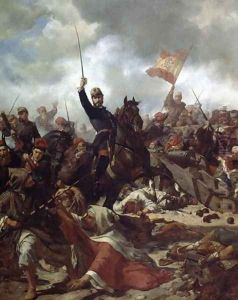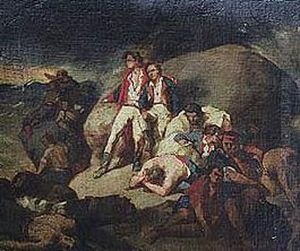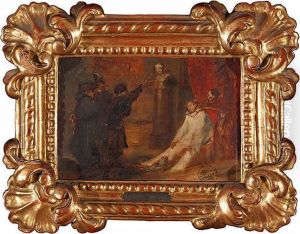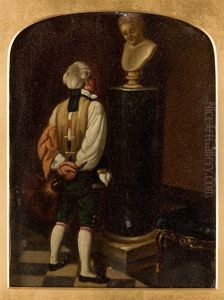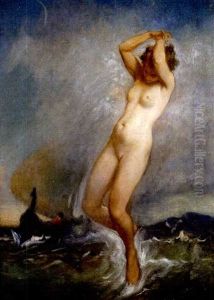Francisco Sans y Cabot Paintings
Francisco Sans y Cabot was a Spanish painter, born in 1828 in Barcelona, Catalonia. He was a notable artist of the 19th century, primarily known for his genre paintings, landscapes, and portraits. His artistic inclinations were evident from a young age, leading him to study at the Escola de la Llotja in Barcelona, an esteemed art school that has produced many prominent Catalan artists.
Sans y Cabot's early work was influenced by the Neoclassical style, but as his career progressed, he began to incorporate elements of Romanticism, which was becoming popular during his time. His paintings often reflected a fascination with everyday life, as well as the customs and traditions of the people of Catalonia. He was also known for his ability to capture the play of light and shadow, adding a sense of realism to his works.
Throughout his career, Sans y Cabot received various commissions and participated in numerous exhibitions. He worked on religious commissions for churches, which included altarpieces and other religious-themed paintings. In addition to his work in Spain, his art also gained recognition abroad. He exhibited his work in Paris, which was the art capital of the world during the 19th century, and received positive reviews for his contributions.
Francisco Sans y Cabot's personal life and his artistic journey were both shaped by the turbulent political landscape of Spain during the 19th century, which included the Carlist Wars and numerous political upheavals. These events sometimes influenced the themes and subjects of his art.
Sans y Cabot's contributions to art were cut short when he died in 1881. Despite his relatively short life, his works have left a lasting impression on the Catalan art scene and continue to be studied and appreciated for their historical value and artistic merit. His paintings can still be seen in museums and private collections, serving as a testament to his skill and dedication to his craft.
